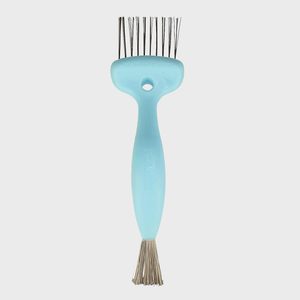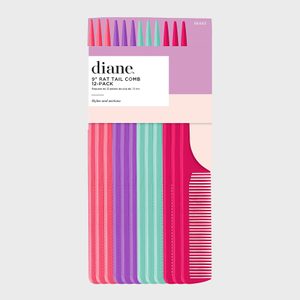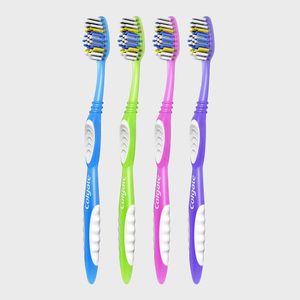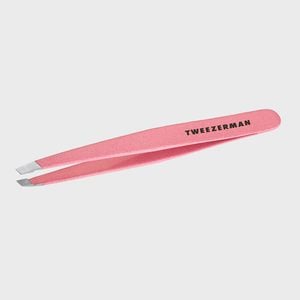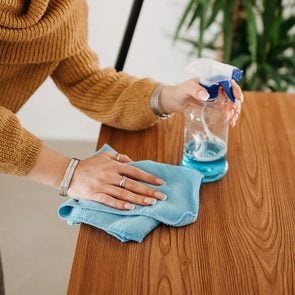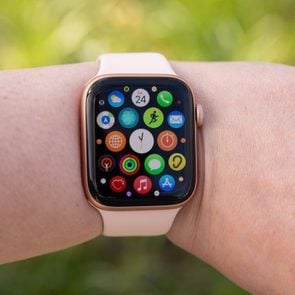How to Clean a Hairbrush in 6 Simple Steps
Updated: Jun. 11, 2024

Rid your brush of gray fuzz! Here's how to clean a hairbrush (and why you should be doing it more often).
You remember how to clean the important things around the house. You rely on a cleaning schedule, and you clean your kitchen sink often. You remove hard-water stains, clean your makeup brushes and have even learned how to clean silver so the candlesticks you inherited from grandma are seriously sparkling. So why haven’t you learned how to clean a hairbrush? It’s easy to neglect, but that brush can get disgusting.
“Your hairbrush collects more than just trapped hair,” says William Gaunitz, a certified trichologist (someone who studies diseases of the hair and scalp). “Demodex (tiny parasites), fungus, lice and more can all be living on your hairbrush.”
Before you’re too grossed out to read on, hairbrushes really are simple to clean, and we’ve created easy-to-follow steps below. If your goal is to learn how to clean throughout your home, follow our lead and clean your hairbrush sooner rather than later. “Leaving bacteria and fungus on the brush for extended periods of time can allow it to grow and disrupt an otherwise healthy scalp microbiome,” Gaunitz says.
On This Page
Why is there gray fuzz in my hairbrush?
Gray fuzz in your hairbrush is totally normal (and only slightly gross). Like the rest of the skin on your body, your scalp regularly rejuvenates itself, and dead skin cells can slough off. If you brush your hair regularly, you’re both helping and encouraging the process. This means you might notice tiny cells form into larger clumps on your brush over time. If you don’t clean your brush often, that lint buildup might eventually turn gray.
Also worth noting: If you use a lot of product in your hair, you’ll probably notice more fuzz and lint on your hairbrush. This is one of the main reasons to clean your hairbrush often. After all, you don’t want to brush your clean and beautifully styled head of hair with a lint-filled brush.
How often should I wash my hairbrush?
The good news is that you don’t have to go overboard. Gaunitz advises cleaning your hairbrush at least once a month to remove buildup, fungus and bacteria and to help prevent unnecessary tugging. Add it to your list of bathroom necessities that should be cleaned or sanitized regularly, including toothbrushes.
What tools to use
Before you go out and spend a fortune on hairbrush-cleaning tools, you should know that it’s a relatively easy process that includes products you likely have in your bathroom drawer.
- Comb
- Tweezers
- Toothbrush
- Gentle shampoo
- Vinegar
- Sink or basin
- Baking soda
- Brush cleaner
Best products to clean a hairbrush
How do you deep clean a hairbrush?
According to Gaunitz, the first step in learning how to clean a hairbrush is always to remove the hair trapped in it. You can use a comb for this or a specialty brush-cleaning tool, preferred by North Carolina–based hairstylists Kenna Ehman and Lauren Kunijo. The steps that follow depend on the type of bristles your brush has, as well as the material of the handle. In general, mild dishwashing soap or an antimicrobial shampoo and hot water will remove skin particles and product residue.
1. Remove hair from the brush
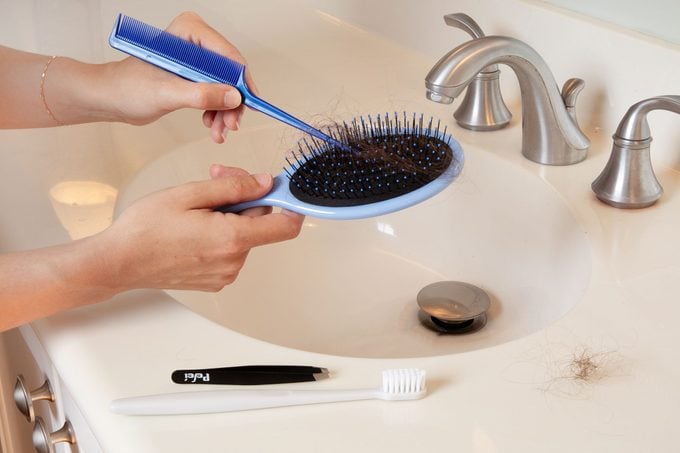
Start by using your fingers to pull up hair that’s already close to the top. Then use a pintail comb, tweezers or a brush-cleaning tool to pull hair that’s stuck to the base of the brush.
2. Create a cleaning solution
Fill a bowl or your bathroom sink with lukewarm water and a squeeze of shampoo or mild dishwashing liquid. Swirl your fingers around to create some suds.
3. Let it soak
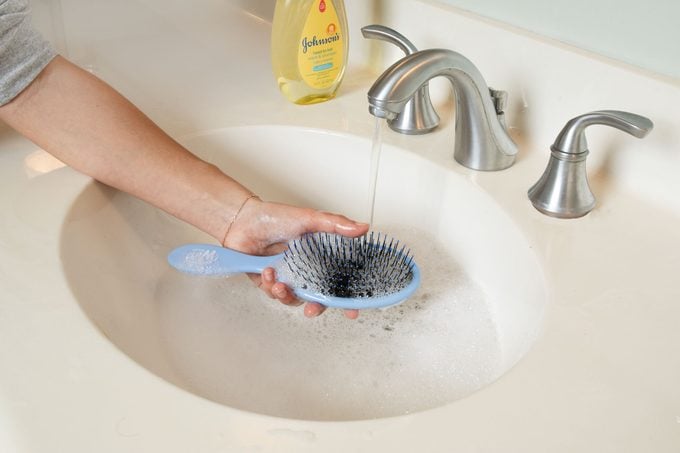
If you use a plastic or laminate brush, you can submerge it in the suds. You may notice some of the fuzz is starting to loosen from your brush’s surface, and your sink might look a bit cloudy. Let the hairbrush soak for about ten minutes.
If you have a natural bristle brush or wooden handle, you’ll want to be a bit more gentle when cleaning. Never submerge your hairbrush in the water. Instead, you’ll want to prop it up so only the bristles are in the water. Let the bristles soak for ten minutes.
4. Scrub
Thankfully, there are many things you can clean with a toothbrush, and this is one of them. Using a toothbrush, scrub away the excess gunk on the base of the hairbrush. Be extra gentle with natural bristles. If you have a particularly gunky brush, you can add a bit of baking soda to your toothbrush before scrubbing.
5. Rinse
When you’re satisfied with the cleanliness of your hairbrush, rinse it well. You can even add a bit of vinegar to the rinse for an extra clean.
6. Dry
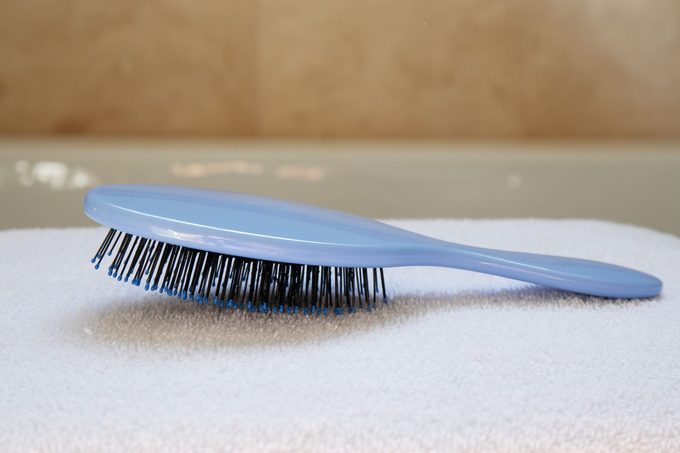
Prop up your hairbrush, bristle side down, on a clean towel and allow it to air-dry.
Pro tip
If you want your brushes extra clean, mix equal parts isopropyl alcohol and water in a spray bottle. After completing the steps above, spritz on your brush and then allow it to air-dry.
How to clean a hairbrush with a wooden handle
Similar to natural-bristle brushes, you’ll want to be extra careful if your hairbrush has a wooden handle. You may notice that your brush starts to warp if you use too much product or get it wet.
1. Create a cleaning solution
Fill a bowl or your bathroom sink with warm water and a squirt of gentle shampoo.
2. Scrub and clean
Dip a toothbrush into the soapy water and gently scrub your brush. Wipe clean and prop your brush bristle side down on a clean towel to air-dry.
Tips for cleaning a hairbrush
- Clean more often if you have dandruff. If you have dandruff, you may notice larger white flakes on your hairbrush. In addition to using shampoo created specifically for dandruff, you might also want to clean your hairbrush more than once a month.
- Try dishwashing liquid. Natural-hair expert and master stylist Darrius Peace of Hayah Beauty prefers dishwashing liquid and baking soda to remove styling products from hairbrushes. “Dishwashing liquid is a very common degreaser. It easily strips oil and buildup off of brushes and other hair tools. Combining dishwashing liquid with baking soda can also be an excellent deodorizer for brushes, as product buildup can lead to an unpleasant scent.”
- Consider using apple cider vinegar. Celebrity hairstylist and makeup artist Marcia Williams, founder of Embellish Beauty, prefers to use apple cider vinegar to clean her hairbrushes, thanks to its antimicrobial and antioxidant effects. She sprays the bristles (avoiding the handles) to remove debris and buildup.
Sources:
- William Gaunitz, trichologist and founder of Advanced Trichology
- Kenna Ehman and Lauren Kunijo, owners of hair salon Kenna Kunijo
- Marcia Williams, founder of Embellish Beauty
- Darrius Peace, stylist at natural-hair salon Hayah Beauty





















